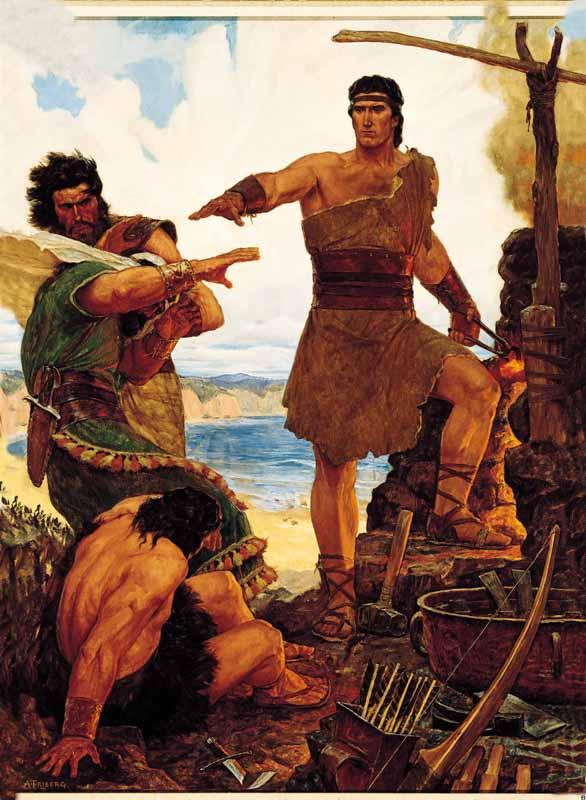Insofar as I can tell, the only positive in this presidential campaign is all the light being shed on one candidate’s curious religion. For understandable reasons, it’s not something this candidate wants to discuss. Anything that attracts the attention of his dogmatic base to these blasphemous beliefs is unwelcome. For the rest of us, it is fascinating.
As I noted in Mormonism as Evolutionary Exemplar, we’ve recently seen three superb articles covering different aspects of this peculiarly American faith. To these articles we can now add a fourth. It is the best of the bunch. In I, Nephi — Mormonism and Its Meanings, the New Yorker’s Adam Gopnik hits on all cylinders. For reasons that surely have something to do with Romney’s religion, Gopnik has just read these four books:
- The Book of Mormon Girl: A Memoir of an American Faith (2012) by Joanna Brooks
- The Mormon People: The Making of an American Faith (2012) by Matthew Bowman
- The Book of Mormon: A Biography (2012) by Paul Gutjahr
- A Peculiar People: Anti-Mormonism and the Making of Religion in Nineteenth Century America (2012) by J. Spencer Fluhman
For reasons that surely have something to do with Romney’s religion, all these books have been (or will be) published this year. Mormonism and moneymaking make for good bedfellows. Authors and publishers have obviously taken note.
While Gopnik’s cruise through these books probably won’t please Mormons, the course he charts is an impressive passage. It is some of the best thinking and writing I’ve encountered in a while. Read it.
After digesting Gopnik’s buffet, you can chew on additional morsels from Russ Douthat. In Romney’s Mormon Story, he contends that Romney is hamstrung by his faith and American (mostly evangelical) hostility towards it. What should be his greatest strength is a weakness because it must remain hidden, downplayed for the base (which truly is base). But this isn’t the only problem. For the more tolerant among us, and perhaps even the admiring, there is this:
Of course, a visit to Mormon country also provides reminders of why Romney has been wary of talking about his religious background. There’s the Mormon Temple, whose interior can be viewed in scale-model form but not actually entered; the defensiveness that surfaces around issues like polygamy and race; the fine line Mormon society walks between a healthy solidarity and an unhealthy conformism — and hanging over everything, the burden of defending Joseph Smith’s revelation, which offers not only bold metaphysical claims (as all religions do) but an entire counterhistory of the Americas, which no archaeologist has yet managed to confirm.
Though I don’t know the details, I understand that archaeologists and historians at BYU once spent a great deal of time and spurious effort attempting to prove the Lamanite myth true. As Mormonism has matured, these efforts have diminished and the myths are now constructed, as so many religious stories are, metaphorically. What does this mean for Gopnik? He might just be a Lamanite.

“Nephi [Bearing Uncanny Resemblance to Romney] Subdues His Brothers” by Arnold Frieberg

